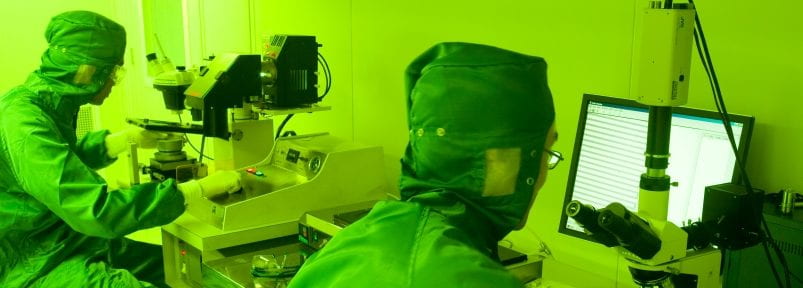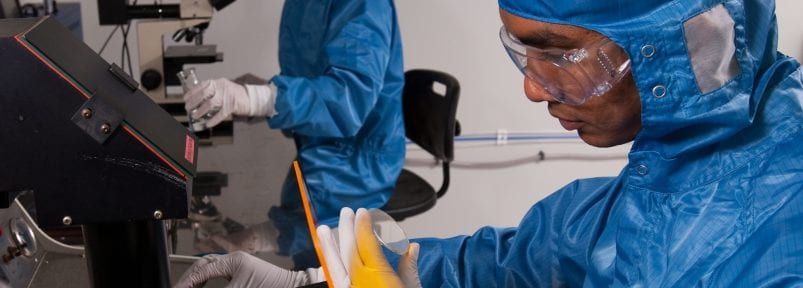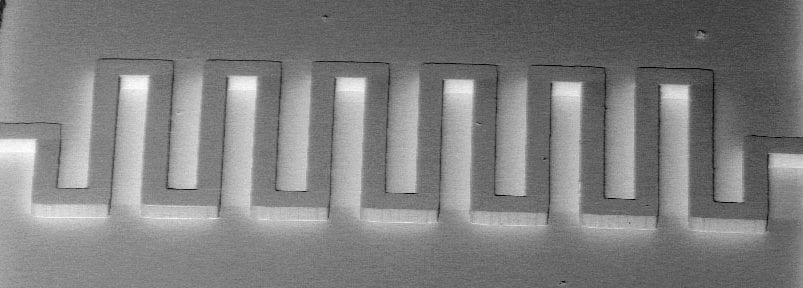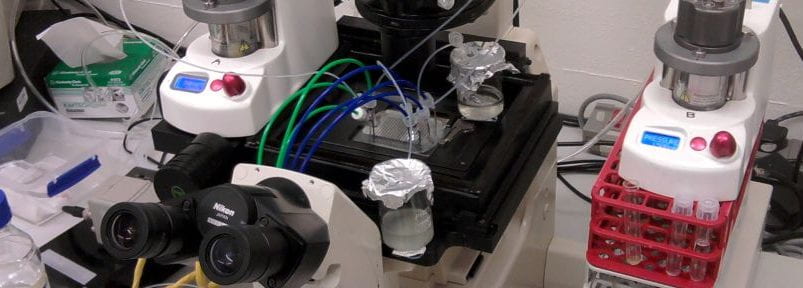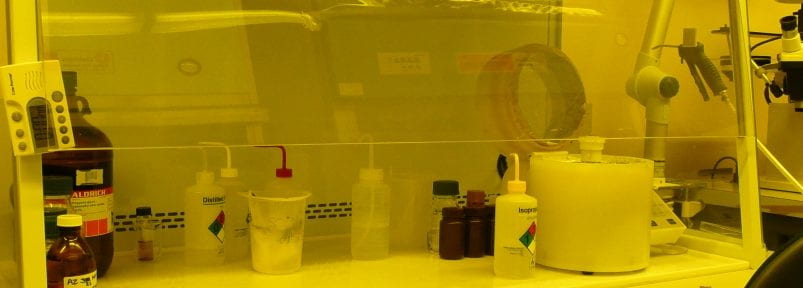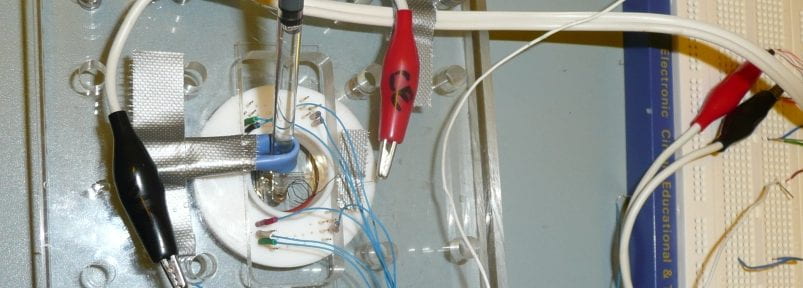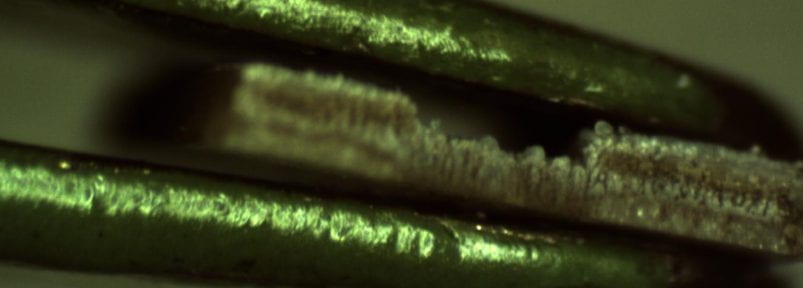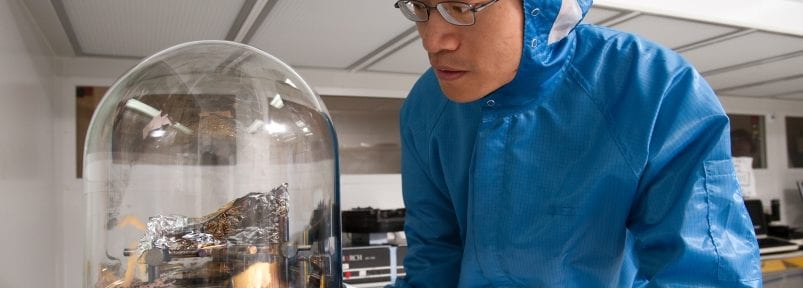Cleanroom Waste Disposal Protocol
Cleanroom Waste Disposal Protocol
Introduction:
This protocol covers the disposal of organic, aqueous, and solid wastes generated in the Auckland Microfab cleanroom.
WARNINGS:
- IMPROPER WASTE DISPOSAL CAN BE VERY DANGEROUS!!! Make sure that you get trained in the proper disposal of wastes in the cleanroom before you begin to generate them. If you are not certain how to dispose of the waste you are generating please seek help from the laboratory manager.
Preparation:
- This protocol assumes that the user has followed the cleanroom entry protocol and therefore is covered in a cleanroom oversuit and overshoes, is wearing safety glasses, and cleanroom gloves.
- Proper waste disposal begins before you enter the cleanroom – make sure that you understand the nature of the waste being generated, have read any relevant safe methods of use (see safety guidelines) and have the physical means to properly dispose of the waste available.
- User of the cleanroom need to use MINIMAL QUANTITIES of process chemicals, etc.
Protocol:
Disposal of Organic Solvents
Organic solvents that are regularly used in the cleanroom include:
- IPA (Isopropyl alcohol, Isopropanol, 2-Propanol, rubbing alcohol, SU8 rinse)
- PGMEA (Propylene glycol monomethyl ether acetate, SU8 developer)
- Acetone
- Ethanol
- Methanol
- NMP (n-Methyl-2-pyrrolidinone)
- CP (2-Cyclopentanone)
- Toluene
Minimal quantities of organic solvents should be primarilly used in the solvent fume hood. Containers of organic solvents should be covered when possible during use.
WARNING: DO NOT MIX ACIDS OR OXIDISERS WITH ORGANIC WASTES
WARNING: All organic solvent waste bottles need to be vented during storage
To dispose:
1. Collect all organic solvent wastes in a dedicated 1L plastic beaker in the solvent hood during processing. This should be labeled as “organic waste” or “organic solvent waste.”
2. Bring the waste bottle out of the solvents storage cabinet (yellow) and place it in the solvent fume hood.
3. Check that the bottle is CLEARLY LABELED as “organic solvent waste” or “organic waste” and capped with vented lid.
NOTE: If the bottle is not clearly labeled as organic solvent waste, DO NOT USE!
NOTE: If the bottle does not have a vented cap contact the chemistry storeroom to obtain one before use.
4. Ensure that there is enough room in the bottle to dispose of your collected organic solvent waste. Waste bottles should never be filled completely full.
5. Open the lid on the wast bottle and pour your organic waste from the 1L beaker into the waste bottle, using the funnel kept under the sink if necessary.
6. Cap the waste bottle with a vented cap
7. Write the amounts and contents of what you have added on the list attached to the bottle
8. Replace the waste bottle in the solvents storage cabinet – make sure it is upright.
NOTE: If the bottle is more than 3/4 full please take it for disposal to the chemistry stores (in the basement of 301, x87505 – open most mornings M-F) Stores can provide a special container for transferring the bottle through the halls.
NOTE: If you need to obtain a new organic solvent waste bottle please contact the lab manager or contact the chemistry stores manager. New bottles should be labeled as organic solvent waste and include a fresh contents list before being taken into the cleanroom. This should be done before you generate more waste.
NOTE: DO NOT USE SPENT SOLVENT BOTTLES FOR WASTE – these are to be taken out of the cleanroom to Chemistry stores for disposal.
Disposal of Halogenated Organic Solvents
Halogenated organic solvents are not regularly used in the cleanroom, however if you intend to use any of the following it needs to be disposed of separately from the normal organic solvent wastes:
- Solvent containing Cl (chlorine), F (fluorine), Br (bromine), etc in their chemical formula
- e.g Chloroform (Chloromethane)
- e.g Dichloromethane (DCM)
- e.g. Trichloroethane (TCE)
The process described above for disposing of organic waste should be followed EXCEPT THAT ALL WASTE NEEDS TO BE KEPT IN A SPECIAL BOTTLE labeled “halogenated organic waste” or “halogenated waste.”
NOTE: The normal organic waste stream and the halogenated waste streams need to be kept separate.
Disposal of Aqueous Solutions
Examples of aqueous (water based) solutions used in the cleanroom are:
- Solutions of acids (Suflric, Hydrochloric, Nitric, Perchloric and water)
- Bases (Ammonium hydroxide)
- Gold Etch (I2/KI in water)
- Chrome Etch (Ceric ammonium Nitrate and Perchloric acid in water)
- AZ Developers (e.g., AZ 326 MIF, these are ~4% Ammonium hydroxide)
- Hydrogen peroxide (~30% – a VERY strong oxidizer)
- Pirahna Bath (solution of Sulfuric acid and Hydrogen peroxide – see glass cleaning protocol – PIRAHNA REQUIRES SPECIAL HANDLING)
To dispose:
WARNING: Only dispose of <150ml of an aqueous waste at any time, especially those containing strong acids or oxidisers. Generation of greater volumes requires special handling – please see the lab manager or a safety officer before doing so.
NOTE: If you are generating more than 1L of acid wastes per week please see the lab manager.
1. Start the tap water faucet so that it is running into the sink without creating any splashes. Make sure that the sink is empty. Allow the water to run for about one minute.
2. Carefully carry your aqueous waste to the sink and pour it slowly into the water in the sink, being careful not to create any splashes. (e.g., 100ml should take ~60s to pour into the diluting water stream)
3. Continue to run the tap for at least 5 minutes after disposal. Be sure to turn off the tap before leaving the cleanroom.
4. Triple rinse the waste container and set out to dry.
NOTE: DO NOT retain the Cr and Au etch waste, dispose of immedietely after use with significant dilution in water down the sink as described above.
Disposal of Solid Wastes
Solid wastes that are generated in the cleanroom might include:
- PDMS (Sylgard 184, Polydimethylsiloxane, silicone rubber)
- Glass slides (whole or broken, coated or otherwise)
- Si wafers (whole or broken, coated or otherwise)
- PMMA (Polymethyl methacrylate, laser cut plastic disks, casting molds)
- Chemical powders (Iodine, Potassium iodide, Ceric ammonium nitrate, etc)
- laboratory consumables (plastic petri dishes, weigh dishes, transfer pipettes, etc)
- Empty and spent acids and solvents bottles
Disposal of solid waste depends on the type of waste:
NOTE: If you are unsure of how to classify your waste please contact the lab manager.
- Reactive wastes (powder chemicals) need to be disposed as described in their MSDS (see Chemgold database)
- Sharp wastes (broken glass, broken Silicon, syringe needles, razor blades, etc) need to be disposed of in the sharps disposal buckets provided in each room. If the sharp waste has solvents or acids on it please allow the solvents to evaporate in the fume hood or rinse excess acids off using water before disposal.
WARNING: Exercise caution when handling sharp wastes to avoid cuts or puncture wounds
- Spent solvent bottles should be allowed to dry of residual solvents in the fume cupboard, defaced (cross out the contents listing), capped, and taken for disposal in the chemstore.
- Spent acids bottles should be triple rinsed with water, defaced, and taken for disposal to the chemstore.
- All other waste can be put into the black trash bins provided in each room. Waste that has solvents should be first allowed to dry in the fume cupboard (e.g. wipes with IPA or Acetone)
NOTE: The sharps buckets and trash bins need to be emptied by the cleanroom users or management – please let the manager know when they are getting full.
Other Notes:
- Please report any issues to the cleanroom manager(can do so via comments below)
- Please use minimal quantities of the process solvents, specialized chemicals, and consumables such as wipes and gloves.
- Please do not remove and tools, equipment, glassware, etc from the cleanroom – if it was in there and you did not make it or bring it in it should remain in there.
Updated: 21/06/2012 – Bryon


